Deer are among the most charismatic creatures, and the most common large mammals many of us see regularly. People have been hunting and watching deer for millennia. They love them so much that they often move them to new countries and new continents.
Australia and New Zealand, for instance, don’t have any native hoofed mammals. British colonizers introduced a variety of deer species that survive and prosper to this day.
North America has no shortage of native deer. That still didn’t stop people from bringing deer from other continents. Many times, these non-native deer were initially confined to farms, hunting preserves or private menageries. But deer are elusive and adaptable animals. They escape. And sometimes they take to their new wild homes.
Many of the free-ranging, non-native deer in the United States are found in Texas, a state with a massive game ranching industry. A mind-boggling array of exotic hoofed beasts roam Texas ranches, and Eurasian deer species are common.
The Exotic Wildlife Association, an industry group, lists 12 species found in the state – but most are raised in very controlled situations. However, several species have escaped the high fences and are roaming freely.
But there are other non-native deer in the United States, often with fascinating origin stories. These deer, again due to their elusive nature, can be difficult to study. Sometimes non-native deer persist in small populations that eventually disappear. Others become firmly established, damaging habitat and outcompeting native species.
Let’s look at the non-native deer you’re most likely to encounter.
-
Sika Deer
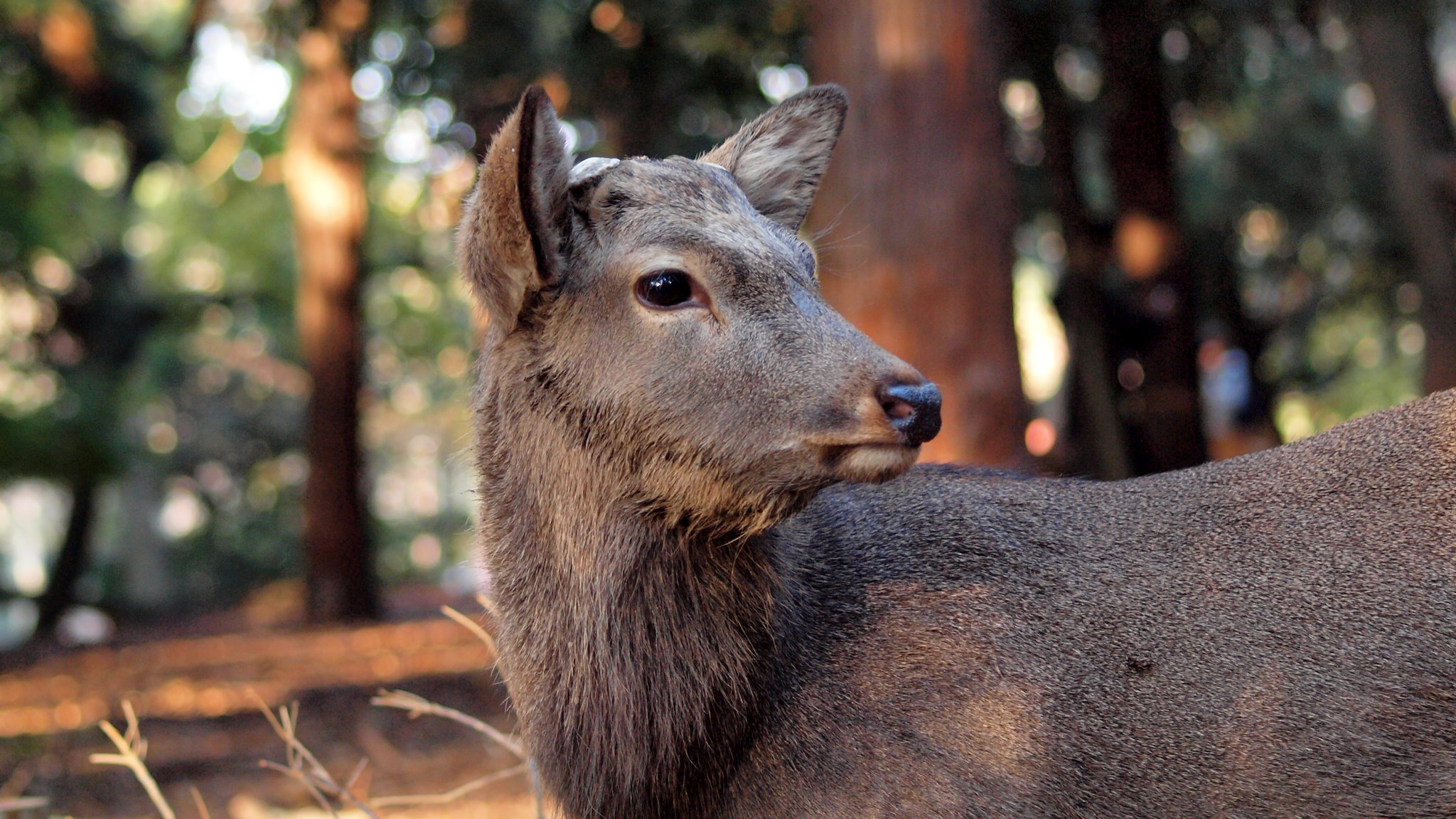
A female sika deer. Photo © coniferconifer / Flickr My family made several vacations to Assateague Island, when I was a kid, where the most famous non-native mammal is the Chincoteague pony. But my eyes were drawn to another exotic mammal, a deer that resembled a miniature elk. At the time, a drive around the wildlife loop would reveal large herds of these Asian deer.
In the 1920s, a Boy Scout troop exhibited sika deer on the Ocean City boardwalk as a fundraiser. However, the deer needed to be fed even in the offseason, which used up a lot of the funds. The Scouts thus released the deer on Assateague Island, where they thrived in the thick wetland habitat. At one point, they made up 80 percent of the deer on the island. An aggressive sport hunting program has significantly reduced the herd, and the deer are no longer easy to spot on the island.
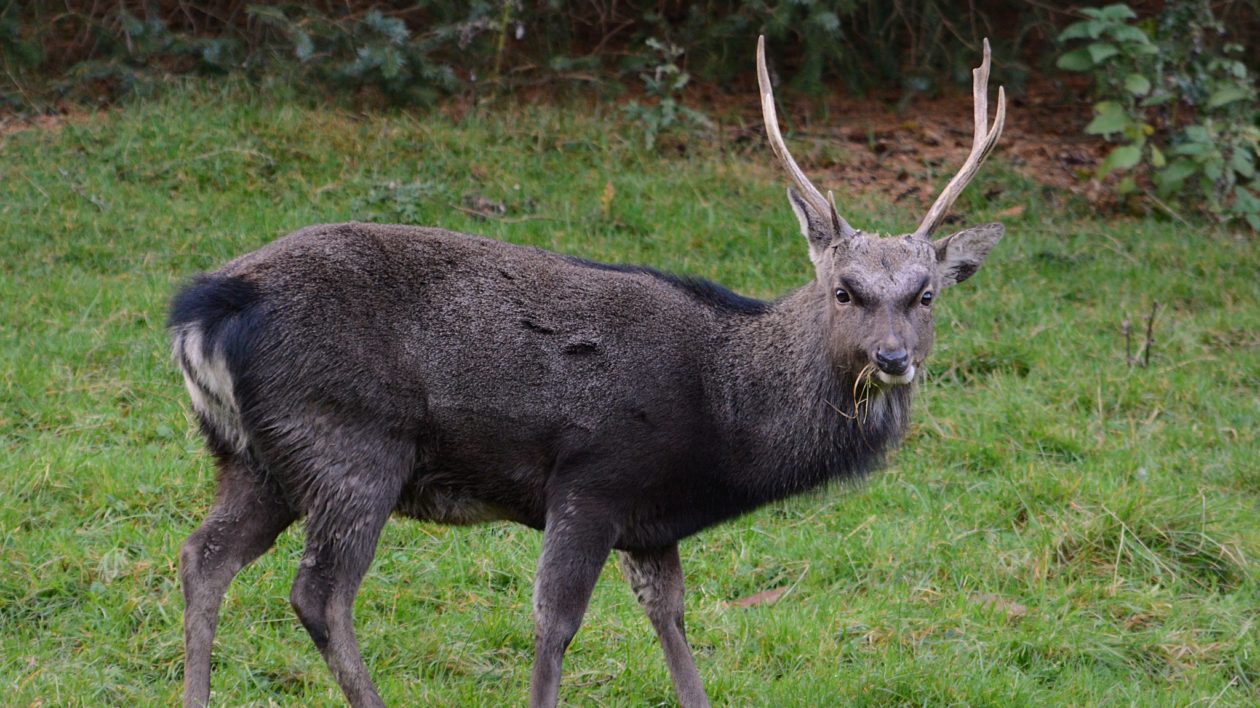
A male sika deer. Photo © Caroline Johnston / Flickr In Dorchester County, Maryland, another individual introduced sika deer, which have also thrived. Recent research traced the genetic origins of these deer to Japan’s Yakushima Island. Today, the deer are more numerous in Maryland than in their native range, a fairly common story when it comes to non-native deer.
In their Maryland range, sika deer also outnumber white-tailed deer. Researchers hypothesize that when the sika were introduced in the early 1900s, white-tailed deer populations had not yet recovered. By the time, whitetails returned to Maryland, the exotic deer were already firmly established.
Sika deer can also be found in Texas, and periodic reports list them as roaming in other states, but the status of those populations is poorly understood.
-
Axis Deer
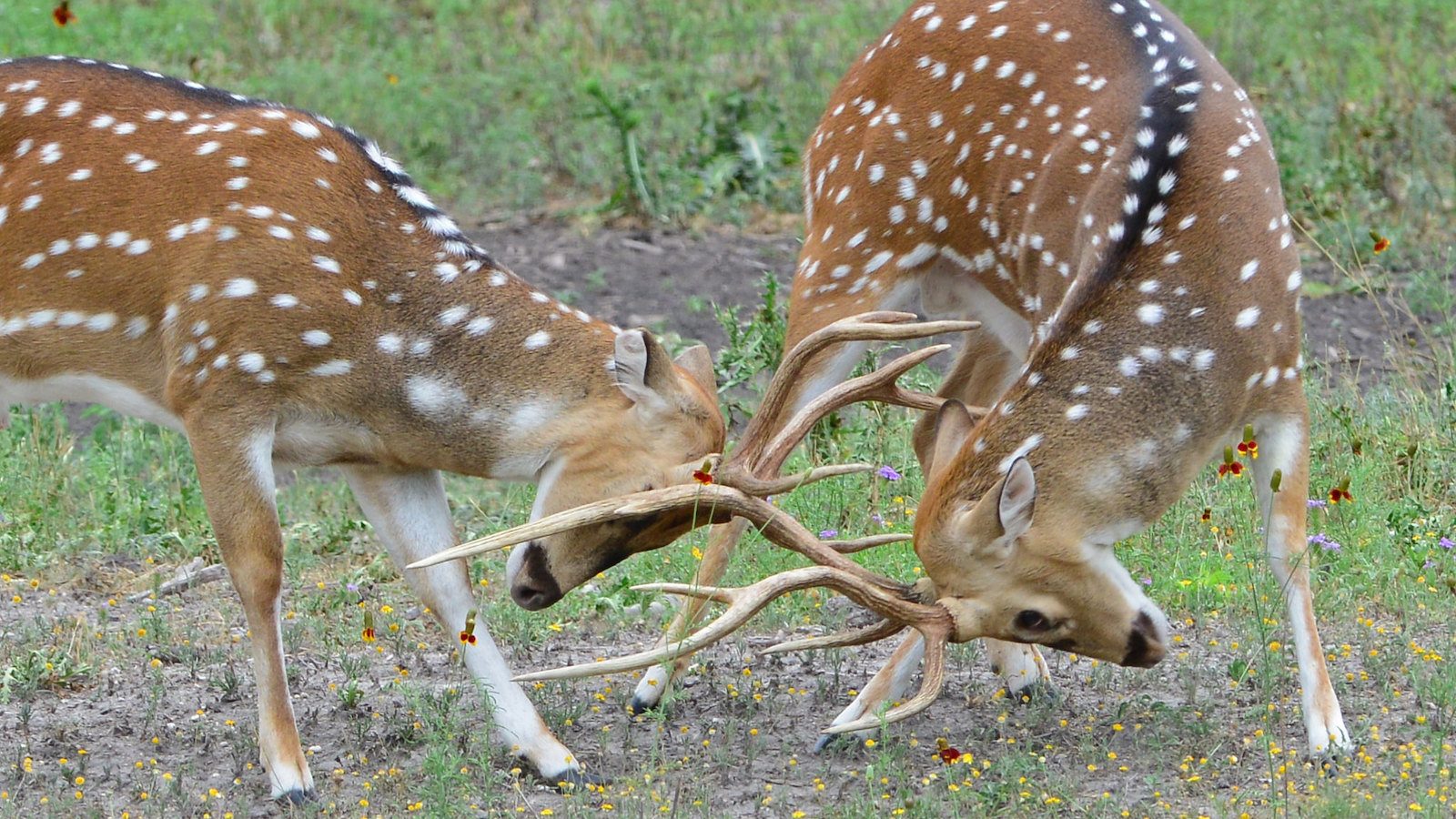
Sparring axis deer in Texas. Photo © Buck Valley Ranch / Flickr Axis deer (also known as chital) are striking animals, with a coat of distinct white spots even as adults. This gives them the appearance of being oversized Bambis. Visit India tiger reserves, and you’ll see lots of axis deer. They still roam there in large herds, and they’re the prey of tigers, leopards, dholes and other predators.
Drive around the Texas Hill Country and you’ll also see large herds of axis deer, sans tigers. They were first introduced to game ranches in the 1930s, and they remain one of the mainstays of the Texas exotic hunting industry. Many of these ranches are quite large, and axis deer have escaped and started wild populations.
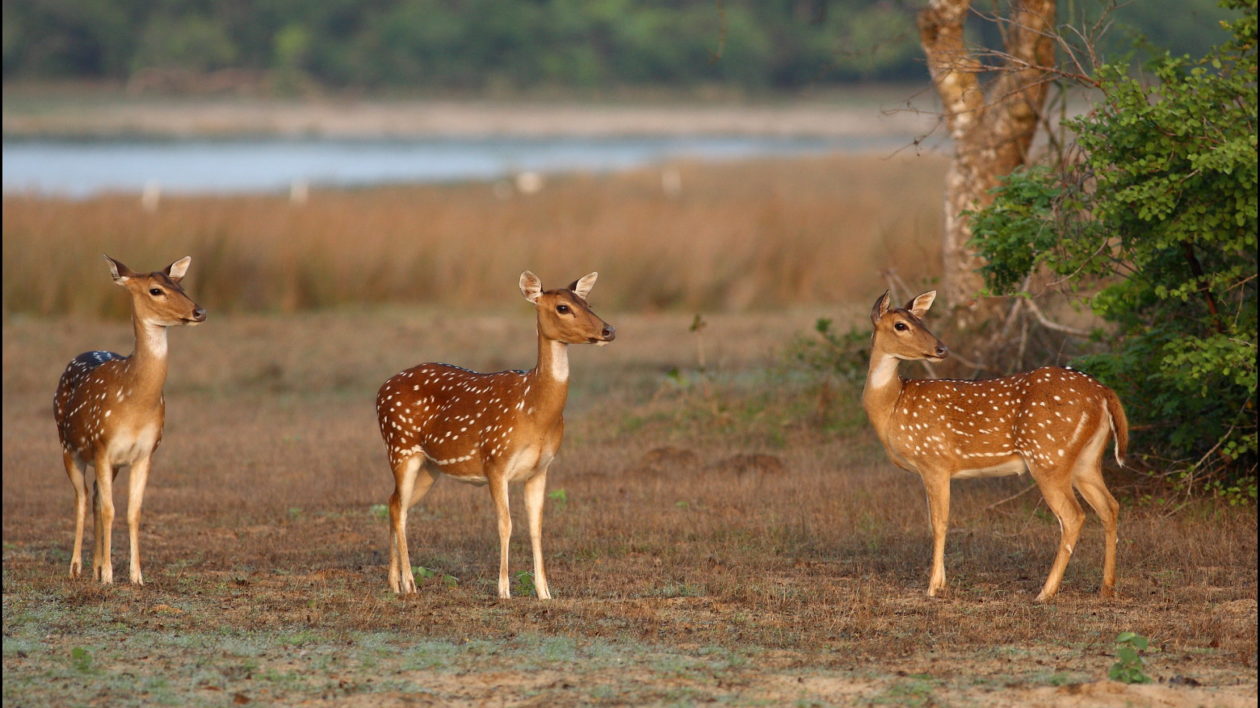
Axis deer in Sri Lanka. Photo © Gaurika Wijeratne / Flickr Finding reliable estimates of Texas’s axis deer population is difficult. But there’s no doubt there are a lot of them. The Exotic Wildlife Association, an industry group, estimates there are 125,000 in the state. In 1988, at least 27 counties had self-sustaining populations, and they have spread since then.
In recent years, researchers and conservationists have been raising the alarm about potential impacts of axis deer on native white-tailed deer and riparian habitat. One conservation group in the Hill Country has instituted a control project that encourages landowners to control axis deer and other exotic species.
There are also free-ranging axis deer populations on the Hawaiian islands of Molokai and Maui. In 2009, the deer were illegally introduced on the Big Island, but thanks to an ambitious removal and monitoring effort, the deer were eliminated by 2017.
-
Fallow Deer
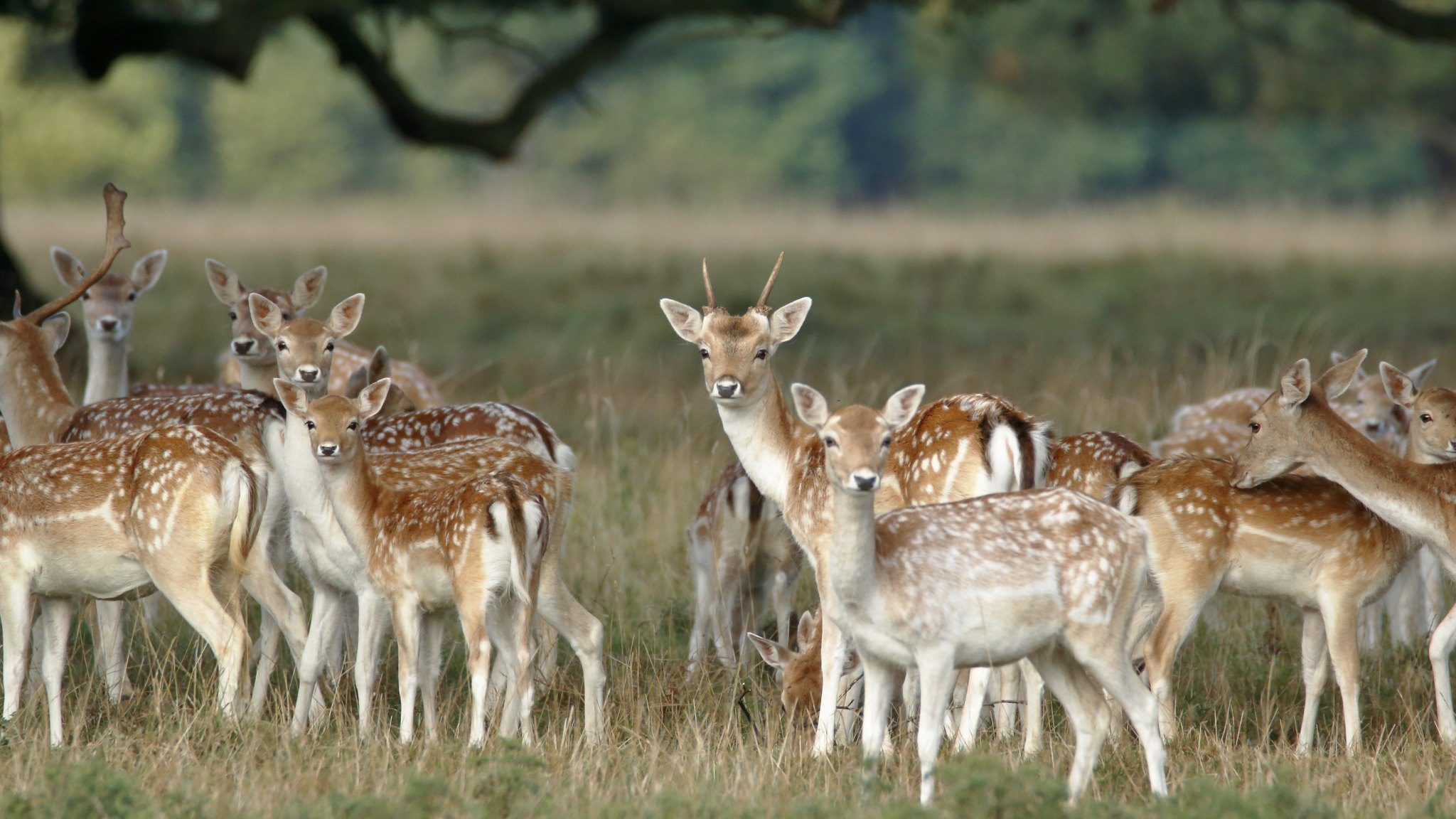
A fallow deer herd. Photo © joe m devereux / Flickr Fallow deer have been moved around so much that it is difficult to ascertain their exact origin. They were certainly present in Europe in the Pleistocene, but at some point, their range contracted to the Middle East. Some sources believe that people have been relocating this species for at least 9,000 years.
Fallow deer are fairly easy to tame (this is the deer you’ll often find in petting zoos) and they can live in close proximity to humans. Romans first introduced them to Britain, but these deer disappeared after the fall of the Empire. In the 11th century, Normans introduced them again to Britain, and they have been common on castle grounds and in deer parks ever since.
From England, they literally took the world. They can be found on the Falkland Islands and in Madagascar. I have seen fallow deer on the South African Cape.
There are also feral populations in North America. Many of these are small, and come and go. Due to the deer’s docile nature, they may be easier to control. Perhaps the best-known example, from a conservation perspective, is the herd at Point Reyes National Seashore in California. Fallow deer roamed this special place in large numbers, overgrazing the habitat and spreading disease to native black-tailed deer and Tule elk.
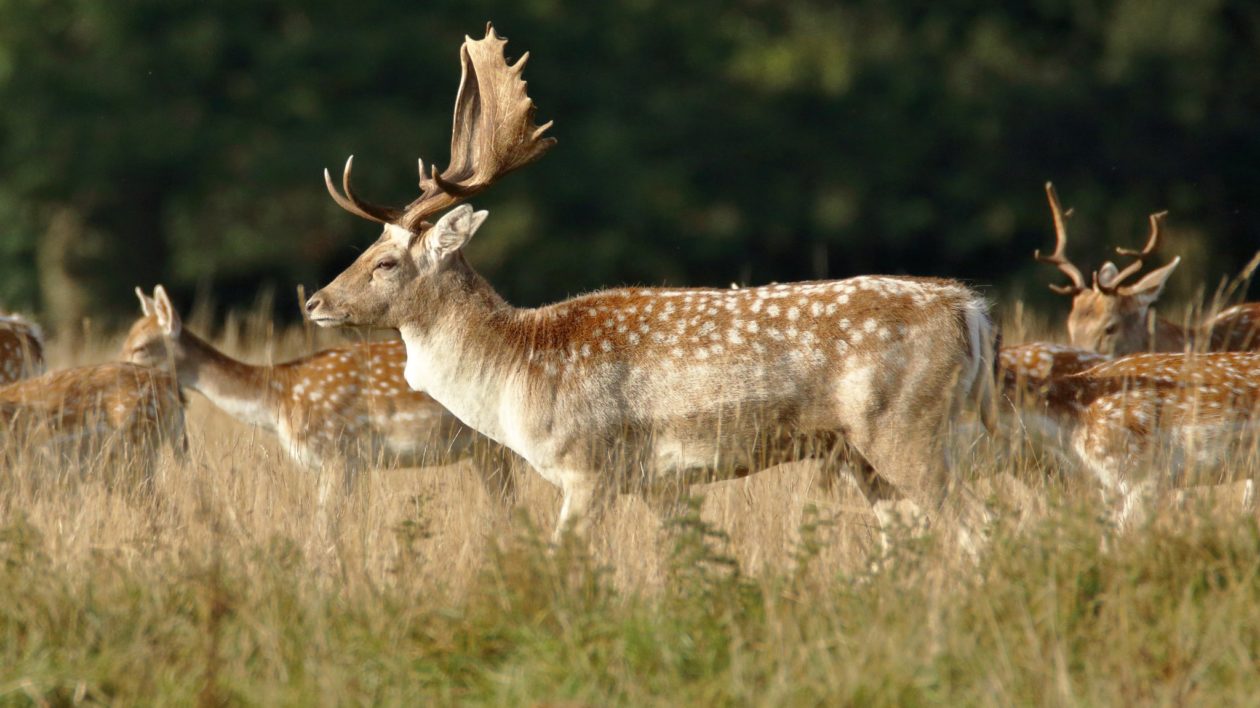
A fallow deer stag. Note the palmated antlers and spotted coat. Photo © joe m devereux / Flickr The National Park Service, despite an outcry from animal rights activists, began a program to eliminate these invasive deer. They began with a culling program and transitioned to contraceptives once the herd was reduced.
Today, a small herd of old female fallow deer still can be found on Point Reyes, left to live out their days. When they die, the park will be free of invasive deer.
Fallow deer are also found on a small barrier island off Georgia, at the Land Between the Lakes in Kentucky, in Texas (of course) and on scattered military bases and preserves. Occasionally, one of these deer will be killed by a hunter in an unusual location. These animals are usually escapees from local farms or menageries.
Sometimes, sightings of an “albino” deer are actually an escaped fallow. These animals have coats that can be brown, blackish, spotted or white. For male deer, the palmated antlers can help distinguish them from whitetails.
-
Sambar Deer
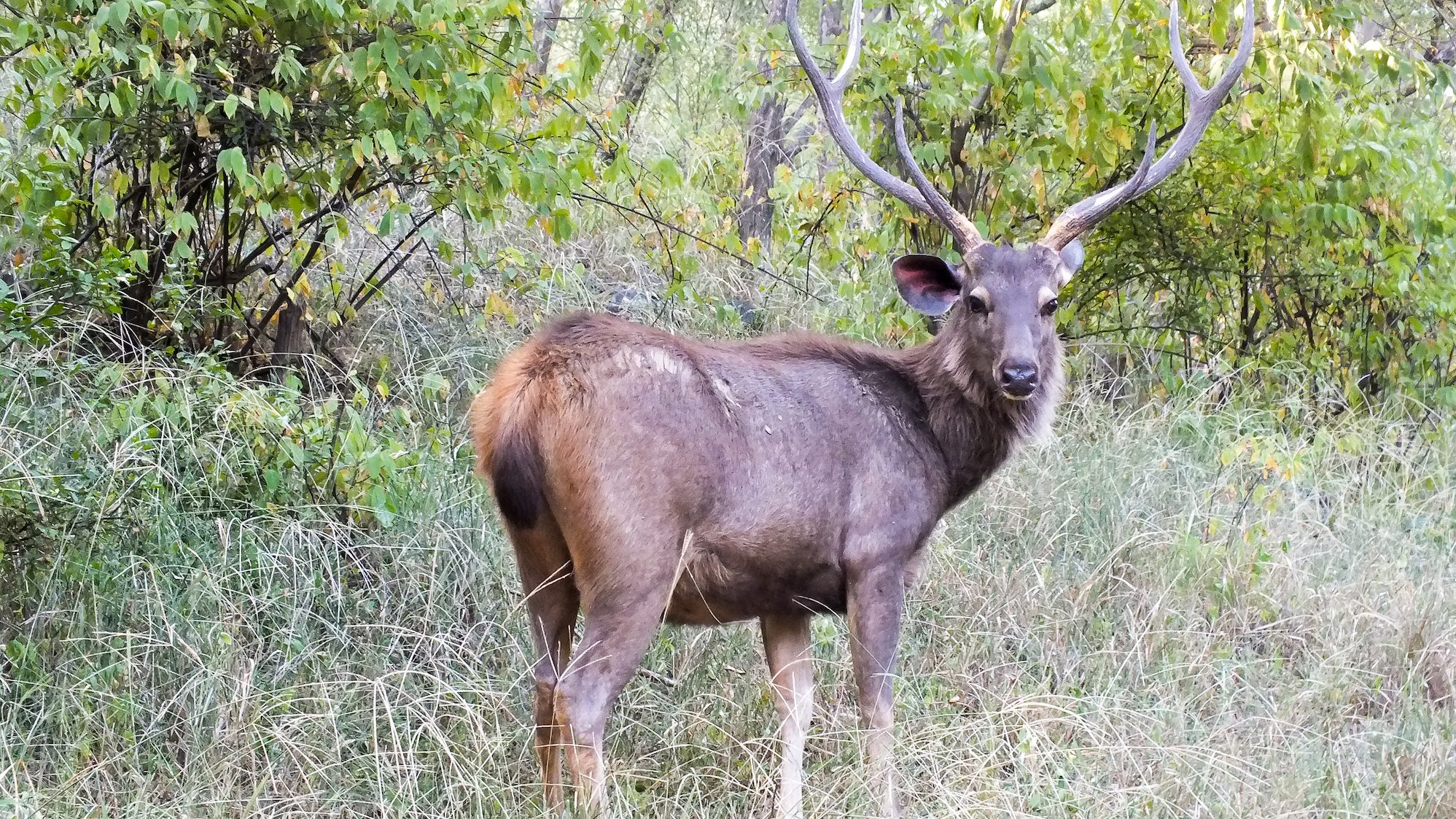
A male sambar deer. Note the resemblance to elk. Photo © Sks2610 / Wikimedia Commons Sambar deer are a large Asian species that bears a superficial resemblance to elk. They can often be found near aquatic habitats, and are another favored prey of tigers.
Sambar deer also appear to be a favored animal of wealthy eccentrics. There is a herd living free near the Hearst Castle in California, introduced there by the media magnate.
In Florida, a doctor and patent-medicine salesperson named Raymond Pierce bought St. Vincent Island and stocked it with sambar deer, as well as white-tailed deer and feral hogs. He later sold the island to other exotic animal enthusiasts, who added zebras, African antelopes and other species to the mix.
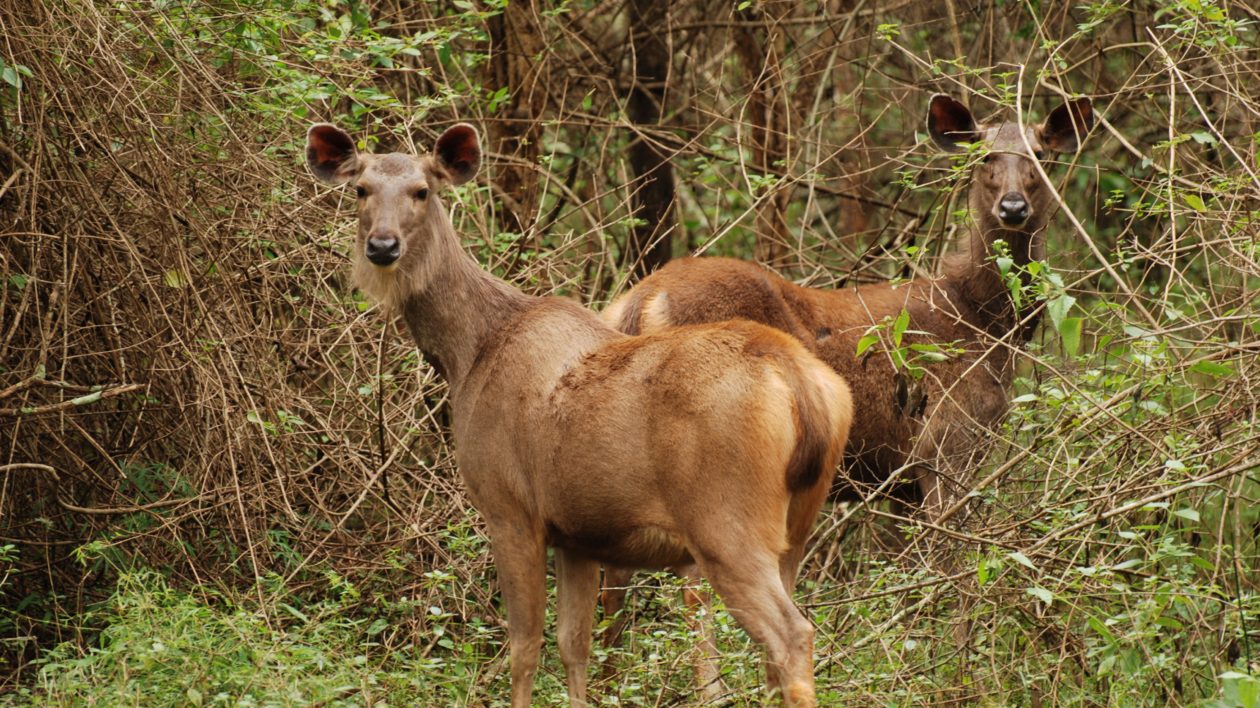
Female sambar deer in India. Photo © Somaskanda.s / Wikimedia Commons In 1968, The Nature Conservancy purchased the property and transferred it to the U.S. Fish and Wildlife Service. For conservation reasons, the decision was made to remove all exotic animals. This proved easy for the zebras, but not so much for the sambar deer. They still roam the island, and their numbers are controlled by an annual hunt.
Interestingly, St. Vincent National Wildlife Refuge is now one of the few places where you can find red wolves. A place where reintroduced native predators now stalk Asian elk? Welcome to the Anthropocene.
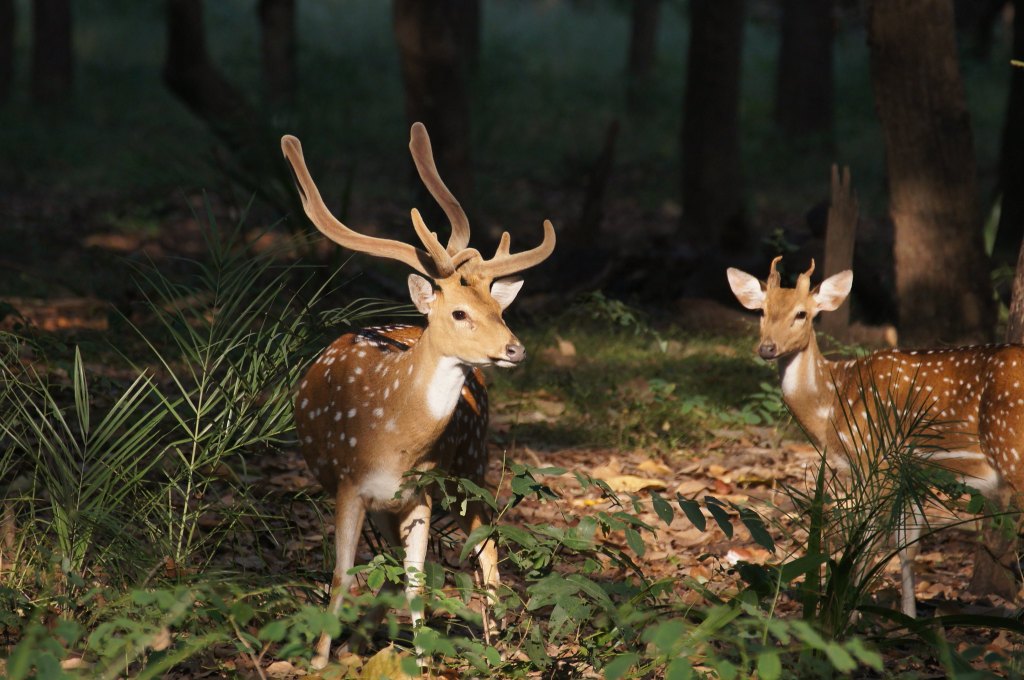



Another deer is starting to make it outside of Texas. The Asian Swamp Deer also known as Barasingha. Billy’s Swamp Safari brought them to Florida where the are allowed to roam with Asian Water Buffalo, Eland, Zebra, American Bison, Watusi Ankole cattle and a few other species. Apparently they seem to be doing well at the attraction and as they are endangered in Asia we should hope for the best that they continue thrive.
Very good article
The non-native deers in North America they are have predetors like mountain lion and wolves .
Do mountain lions hunt feral nilgai antelopes in texas ?
Very interesting article!
Do roe deer live in North America?
Hi Kukui,
Thanks for your question. Roe deer are not native to North America, and there are also no established non-native populations.
Best,
Matt
Wonderful article
Have you heard of the sacred deers in Nana, on the island Honshu in Japan?